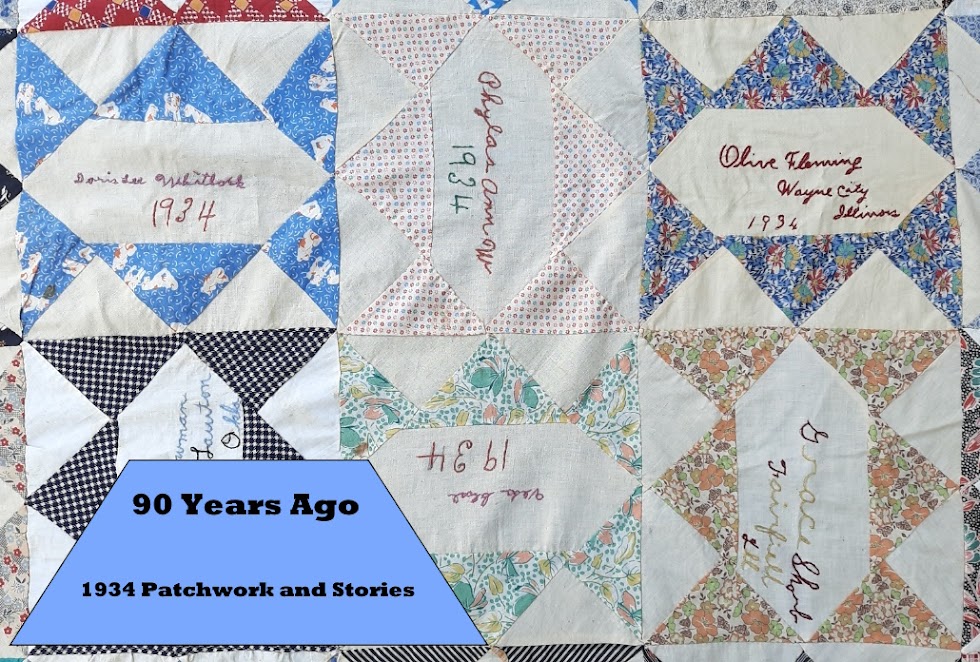Last weekend I was fortunate enough to attend a one day applique school run by
Threadbear at Castlemaine, Victoria. I wasn't sure what to expect but I was certain that I would enjoy whatever the day brought. The two tutors for the day were Margaret McDonald and Di Ford Hall. Margaret and Di had each designed an applique quilt pattern using the
Peace and Unity range designed by Judie Rothermel. Each pattern featured a medallion centre and a number of borders. Each participant would receive a goodie bag with fabric and the two patterns, and spend half a day with each tutor.
The goodie bag was overwhelming - look at the pile of fabric! And the tin is full of mints and chocolate!
My morning session was with Margaret McDonald. We had a go at needleturned Raggedy Robin shapes
 |
| Margaret's green Raggedy Robin in her quilt top |
 |
| My still unfinished Raggedy Robin |
Margaret showed us some short cuts to save time. Below is a long appliqued border. The top sample is needleturn; the second sample has been buttonholed by machine.
Margaret showed us how to hem S shapes to make a woven border. Hemming S shapes is not easy.
In the lunch break I walked back to the main street in Castlemaine to visit one of the numerous antique/secondhand shops. This one is called The Restorers' Barn and it deals in all sorts of things that you might use to decorate/restore your home.
The afternoon was spent with Di Ford. The first technique Di presented was Broderie Perse (which I still can't pronounce). Broderie perse is an old applique technique. When printed fabric was very expensive, needlewomen would cut out a flower or leaf or bird and sew it to a larger plain piece of material. Di's quilt top featured broderie perse flowers and she showed us how it was done.
 |
| Blue broderie perse flowers with inked detail | | |
|
 |
| Di makes it look easy |
So ... the results of my day's work? Just a few little things.....
But I have added to the collection since I've been home.....
It was a fabulous day, I hope I can book another one next year.

































